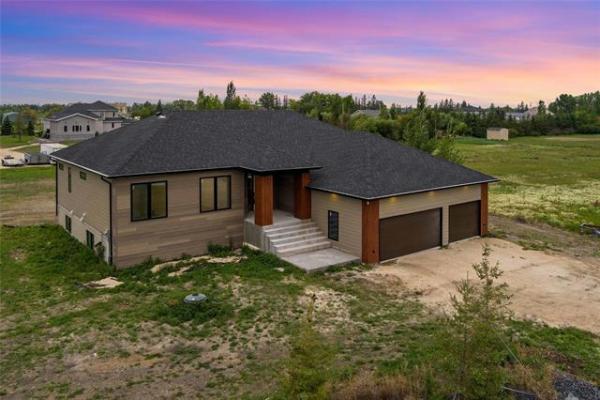QUESTION: I am having a house custom-built with a piled foundation and supporting teleposts on piles as well. I have asked the contractor to place isolation or slip joints around the teleposts to ensure the floor can move independently from the columns or teleposts. He feels this is totally unnecessary and just wants to poly-wrap the columns and set them in the concrete floor when it is poured. Can you offer your thoughts on this? Thanks, Richard Huska
ANSWER: It's refreshing to receive a question about a new home under construction, as the majority of the inquiries I receive are about older-home issues. Most people don't realize that new homes may have almost as many issues as older homes; they are just of a different nature. Your concern about your contractor's proposal for proper protection of your teleposts is well-founded.
I will assume that you've done considerable research on various topics of new-home construction to be concerned about a rather obscure item like this. This issue can arise not only with homes built on piles, but the majority that are still built on concrete footings, due to properties of our area's expansive clay soil and installation methods for concrete basement floors.
Anyone who has owned a new home in the Red River Valley knows that concrete-basement floor slabs will begin to crack and shift almost immediately after installation. Normally, the movement is in an upward direction and may vary from slightly annoying to severe. There are several variables that determine the extent of the heaving, but they may be difficult to pinpoint before or after construction.
The main issue with floor-slab movement is the effect it can have on the floor structure above. If basement walls are built with minimal space between them and the main floor joists above, severe heaving of the basement floor can push up and cause serious bumps in the floor. That's why properly built basement walls have gaps at the top or the bottom to allow for this movement.
The other issue with a heaving concrete slab is the effect it has on items embedded in the concrete. This primarily includes plumbing, sump-pump drains and teleposts. Most new homes have drains and stacks installed with slip-joints that move with the floor, but adjustable steel teleposts do not have that capability because they are load-bearing. If the steel posts are not properly separated from the concrete, they can be lifted up along with the concrete, creating serious structural problems. This can occur because the bottom of the posts can be lifted off the concrete footings (or, in your case, piles), which are designed to properly carry the load of the home above.
To avoid this serious issue from occurring, the steel posts have to be isolated from the wet concrete when it is poured. There's a possibility that wrapping the posts with simple polyethylene sheathing will prevent bonding of the concrete to the steel, but that is not always the case. The primary use of the poly, in this case, is to prevent wicking of moisture from the concrete into the bottom of the steel post to stop it from rusting. For the poly to act as a slip joint, the concrete would have to shrink sufficiently away from the posts, as it cures, to create a small space. There is no guarantee that this will occur, especially if the poly is not installed perfectly flat or if holes are poked in the thin plastic during the pour.
A better method to prevent the possibility of bonding between the concrete of the basement floor slab and the steel posts is to use a sturdier material. In the past, smooth plastic piping, such as PVC or ABS pipes, were used. Today, it's quite common to see good builders use a small piece of plastic drain tile piping for this purpose. This material is often ideal because it's corrugated for additional strength. It's also readily available, as it's already being used in the same area of the house. In some cases, the diameter of this pipe is quite a bit larger than the teleposts, but can be cut along its length and installed tighter to the posts without compromising its function.
This issue involves the grey area where building codes may not address an issue or may not be specific about material to be used. Installation of a proper slip joint is something that should be done by an experienced builder to prevent a potential problem, whether it's completely necessary or not. There's no additional work or expense to cut a few pieces of leftover weeping-tile pipe rather than poly for use on the teleposts. The only additional effort will be in sealing the larger gap around the teleposts after the concrete sets. This can easily be accomplished with a small amount of flexible caulking, to seal this small opening.
The only reason I can think of why your builder would not agree to your request, if for no other reason than to satisfy a knowledgeable customer like you, is arrogance. Stick to your guns and insist that the telepost isolation is done to this higher standard, especially since it requires very minimal extra effort and no added expense.
Ari Marantz is the owner of Trained Eye Home Inspection Ltd. and the president of the Canadian Association of Home & Property Inspectors-Manitoba (www.cahpi.mb.ca). Questions can be e-mailed to the address below. Ari can be reached at (204) 291-5358 or check out his website at www.trainedeye.ca.
trainedeye@iname.com



